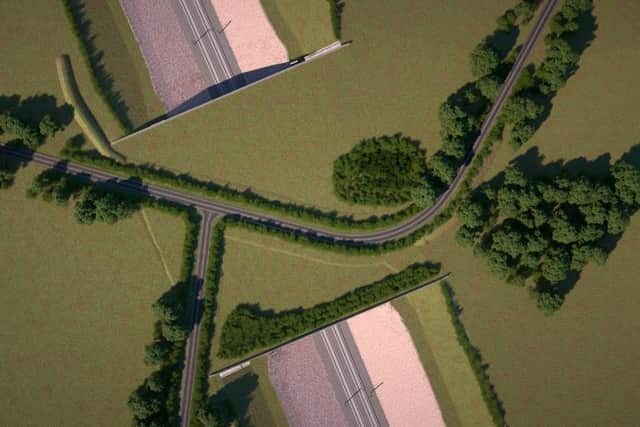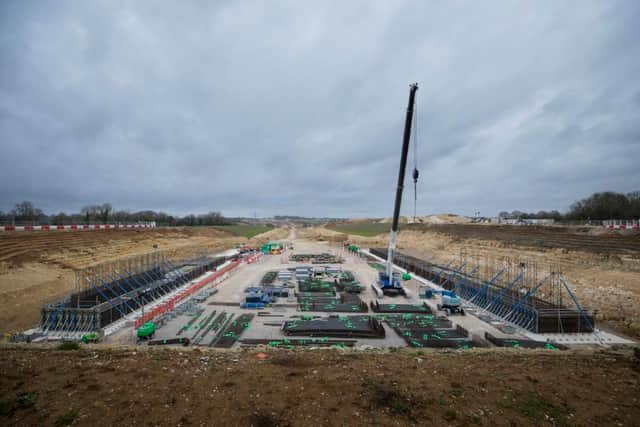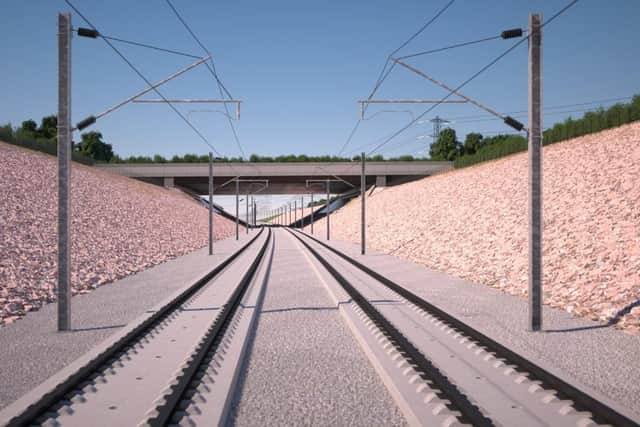Largest 'green bridge' over HS2 near Brackley - images show crossing for traffic over high speed rail track
and live on Freeview channel 276
The 99m-wide bridge is designed to take a local road over the new railway, close to Turweston, with new hedgerows and vegetation planted on top to create a space for wildlife. It will also carry a footpath and bridleway.
Green bridges are an increasingly common sight above new railways and motorways on the continent. They are designed to protect birds, mammals and insects while longer ‘green tunnels’ also help protect views across the countryside and reduce noise and disturbance for local communities, HS2 says.
Advertisement
Advertisement
It is one of sixteen green bridges to be built as part of the HS2 project, with most carrying a combination of local roads, footpaths and farm access routes. Five green tunnels are also being built, with some up to one-and-a-half miles long.


The rail project says together, they will help knit together 33 square kilometres of new wildlife habitats alongside the railway including seven million new trees and shrubs.
Construction of the HS2 project, linking London and Birmingham, is now well underway. It is designed to almost halve journey times between Britain’s two largest cities and free up space for more local trains on the most crowded parts of the existing west coast mainline.
The Turweston bridge will cross one of the railway’s longest and deepest cuttings, which will stretch for 1.5 miles past Turweston village.
Advertisement
Advertisement
Elizabeth Longinotti, HS2 Ltd’s Senior Project Manager, said: “Green bridges are still rare in the UK and just one example of how HS2 is leading the way in terms of innovation and environmental protection. The bridge at Turweston will help keep communities connected, while supporting wildlife and biodiversity on either side of the railway.


“Once complete, HS2 will deliver faster, more reliable journeys between London and Birmingham – while freeing up space on the existing mainline for more local trains. But it’s also important that we deliver on our environmental commitments, which is why Turweston’s green bridge is so important.”
Thirty-six steel beams will support the structure, with pre-cast concrete slabs forming the deck. 2,700cubic metres of earth will then be landscaped over the top, with the hedgerows, shrubs and other vegetation planted last.
During the design stage, better than expected ground conditions combined with design optimisation allowed the team to cut the structure’s carbon footprint by 42 per cent. This was achieved by significantly reducing the amount of carbon-intensive concrete and steel by removing 102 deep piles and opting for shallow foundations instead.
Advertisement
Advertisement
Excavation of the cutting is well underway, alongside foundation works for the bridge. Assembly of the steelwork is expected to begin later this year.


Tony Wehby, EKFB’s Project Director, said: “The earthworks programme between Turweston and Greatworth includes some of the largest cuttings on the HS2 project. One of the deepest and largest in terms of volume is the cutting at Turweston.
“To ensure connectivity isn’t lost for our local communities and the areas ecology, this well-thought-out overbridge is designed to connect both sides of the cutting and is still in keeping with its environment – boasting a landscaped area to blend into its surroundings.
“The team has also done a tremendous job in finding innovative ways to reduce the carbon output of this structure.”